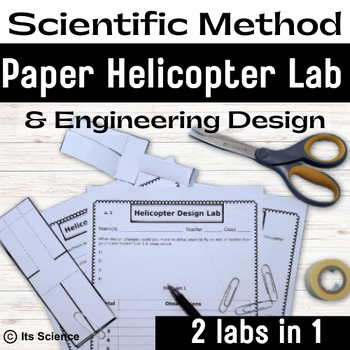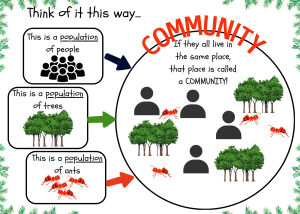In today’s changing world, STEM in Middle School education can play a key role in equipping students with the valuable skills they need to succeed. The sooner they are introduced to STEM, the better. That’s why STEM education needs to start in Middle School (or sooner). This integration of science, technology, engineering, and mathematics will encourage critical thinking, problem-solving, and creativity.
That’s what any science teacher desires. Middle school is the right time for students to dig into discovery and nurture their potential in each of these fields.
We can foster a deep interest in STEM in Middle School students by engaging them in hands-on activities through real-world applications and collaboration. These learning experiences allow students to explore, create, and solve challenges. And, through that, spark their curiosity and develop a lifelong passion for science and technology.
The Importance of STEM Education
One of the main reasons STEM in Middle School science and other areas becomes essential is its innate gift to foster critical thinking and problem-solving skills. The ability to analyze situations, identify problems, and develop creative solutions will prepare them for academic success and equip them with tools needed to tackle real-world challenges.
By engaging students in hands-on activities and open-ended projects, they are encouraged to think outside the box and explore new ideas. This, in turn, nurtures creativity which leads to innovative solutions. In a world where creativity and innovation are highly valued, STEM education provides an ideal platform for students to develop these vital skills.
What is STEM Education
Bundle the disciplines of science, technology, engineering, and math. Aim them at a problem and encourage students to brainstorm a solution, and you have STEM. Or, you can devise a problem in which students must use each of those key skills. Either way, it is STEM.
Along the way, students will collaborate, analyze components of a problem, and develop their unique solutions. In many cases, without realizing it, they will use each of these skills.
Hands-on? This is quite possibly the key to this method of instruction. As students engage in experiments, projects, and activities, these 4 skill sets come into play. It does, however, require a purposeful intent on the science teacher’s part (that’s you).
Benefits of STEM in Middle School
Middle school is one of the best times for students to explore and develop their interests and passions. Students can benefit in many ways by introducing STEM in middle school education during these years.
One of the key benefits of STEM education for middle school students is the development of critical thinking skills. Being open-ended, STEM dispenses with memorization and regurgitation. Through analysis of problems, logical thinking, and evaluating evidence, students are urged to think critically and make informed decisions. (All of these processes are essential for success in any field.)
STEM in middle school education also promotes creativity and innovation. By engaging in hands-on activities and open-ended projects, students are encouraged to think creatively and develop unique solutions. This interplay of exploration and curiosity can fuel a lifelong passion for science and technology.
Problem-solving skills are also developed through STEM education. In STEM subjects, students are presented with real-world challenges that require them to think analytically, identify problems, and develop unique solutions. This process not only exercises their problem-solving mental abilities but also encourages flexibility and perseverance in the face of challenges.
Lastly, STEM in middle school education prepares students for the future. In today’s job market, STEM skills are highly sought after. By exposing middle school students to STEM subjects, they can begin to develop the foundational skills and knowledge necessary for future success in STEM-related fields.
The Benefits of Curiosity in STEM Education
In STEM education, curiosity plays a vital role in igniting students’ interest and passion for these subjects.
When students are curious, they are more engaged and motivated to learn. Curiosity sparks a desire to explore, discover, and understand the world around them. It encourages students to ask questions, seek answers, and delve deeper into the subjects they are studying.
STEM education is nurtured through hands-on activities. Add to that real-world applications with open-ended projects and you have a formula for success. Providing students with opportunities to explore and experiment, their curiosity is ignited, and they become active participants in their learning.
Furthermore, curiosity in STEM education is closely linked to problem-solving. When students are curious about a topic or problem, they are more likely to persist in finding a solution. This perseverance and determination are critical qualities for success in STEM fields, where complex problems often require inventive solutions.
Strategies to Ignite Curiosity in Middle School Students
Using these strategies and approaches, you can help create a deep interest in STEM in middle school subjects and inspire your students to pursue further exploration and learning. Here are some strategies to consider:
- Make it relevant: Unless STEM activities are woven into appropriate real-world applications and everyday experiences, you could lose STEM’s effectiveness. Having these open-ended activities may be enough to “grab” some students. However, to maximize STEM’s effectiveness, creating topics to explore that center around their interests is sure to help. And, you must show students how the subjects they are learning have practical implications and how they can make a difference in the world.
- Provide hands-on experiences: In my thinking, engaging students in hands-on activities and experiments allows them to truly explore and interact with STEM concepts. There is nothing like working with your hands to drive curiosity and encourage exploration.
- Encourage inquiry-based learning: Allow students to ask questions and seek answers. Encourage them to explore their interests and pursue independent research (when possible). If at all possible, provide opportunities for them to investigate topics that interest them.
- Promote collaboration: Again, without a collaborative learning environment, how are students going to experience what happens in the work-a-day world? Students must work together on projects and problem-solving activities. This teamwork fosters curiosity as the learn from each other, share ideas, and approach problems from different viewpoints.
- Integrate technology: Utilize every technology tool and resource at your disposal to enhance learning and engage students. Virtual simulations, online research, and interactive software can trigger greater levels of curiosity and provide new paths for exploration.
- Provide real-world connections: Show students how STEM subjects are connected to real-world issues and challenges. Research examples on the internet to help with this. Or, bring in guest speakers from STEM-related fields or organize field trips to local companies or research facilities. Students can see from the start that this isn’t just a “school” thing…that it does apply outside the classroom.
Carry out these strategies and ignite your middle school students’ inquisitiveness. Use STEM to pave the way for a lifelong passion and drive future innovations.
Incorporating Hands-on Activities in STEM Education
As mentioned above, hands-on activities are a cornerstone of STEM education. Active engagement, exploration of concepts through applied exercises, and development of critical thinking and problem-solving skills are all made possible when minds and hands meet materials.
One way to move into the STEM world is to incorporate hands-on activities with projects. Use a portion of a current unit and extend it with a project that requires them to apply their knowledge and skills to solve a related real-world problem. This can range from designing and building a model bridge to conducting experiments to investigate a scientific phenomenon. Spaghetti bridges is a favorite STEM activity with my students.
Another approach is to integrate hands-on activities into everyday lessons. For example, you can use manipulatives (real or virtual) or physical models to help students see abstract concepts in mathematics or science. Interactive simulations or virtual experiments using one or more of the 4 skill sets will provide students with “realistic” experiences to aid their understanding of difficult concepts. [see ready-to-go labs below]
Hands-on activities can also be extended beyond the classroom. Robotics clubs, science fairs, and engineering competitions provide students with opportunities to engage in hands-on projects outside of regular class time. These experiences not only deepen their understanding of STEM subjects but also foster curiosity and excitement.
The Impact of Technology on STEM Education
Technology has revolutionized our whole lives. Cellphones, tablets, smartwatches, laptops, etc are common items used in work and leisure activities. It pays to make use of them in the context of STEM education.
One way technology impacts STEM in middle school education is its ability to provide engaging and interactive learning experiences. You may not have the tools or equipment for some hands-on investigations. However, virtual simulations and reality tools allow students to explore concepts and phenomena that they wouldn’t otherwise be able to. Besides, these technologies provide a rich and appealing learning environment that foster curiosity and promote deeper understanding.
If students are working on a project and don’t understand a concept or application of it, technology can assist them. Using resources, they can teach themselves the necessary information or skills to work around problems and give a greater level of success.
Online databases, virtual libraries, and educational websites offer a huge range of information and materials to aid students further their understanding. This access encourages independent exploration. [see lists below]
Collaborative Learning with STEM Education
Collaboration is an essential component of STEM in middle school education. By working together on projects and problem-solving activities, students not only develop their skills but learn to rely on the strengths of others as they communicate as a team to solve challenges.
One of the benefits of collaborative learning in STEM education is the opportunity for students to learn from one another. Working in teams, students can share ideas, views, and approaches as they work to solve problems. This teamwork fosters creativity and innovation as students are exposed to different ways of thinking and approaching challenges.
Collaborative learning also helps with communication skills. In STEM fields, as well as the classroom, the ability to successfully communicate ideas, findings, and solutions is crucial. Working in teams, students have the opportunity to practice expressing their thoughts, listening to others, and engaging in meaningful discussions. These skills transfer well to other arenas of life and are a necessary part of success in the workplace.
Furthermore, collaborative learning aids problem-solving skills. Exposed to a variety of problem-solving strategies and approaches, students can move forward quicker and more effectively than by themselves. It also increases their problem-solving toolkit by exposing them to different approaches to challenges. Additionally, collaboration builds toughness and persistence as students learn to navigate conflicts, overcome obstacles, and work towards a common goal.
Resources and Tools for STEM Education in Middle School
To unlock the power of STEM in middle school, educators must use a variety of resources and tools. These resources provide support, guidance, and inspiration for both teachers and students.
One valuable resource for STEM education is online platforms and websites dedicated to STEM learning. These platforms offer a lot of ideas from interactive activities and lessons to resources that align with curriculum standards. They often provide step-by-step instructions, videos, and quizzes to engage students and reinforce learning. [see lists below]
Another valuable resource is STEM-focused organizations and institutions. Many universities and museums offer educational programs and materials specifically designed for middle school students. These programs may include workshops, summer camps, or mentorship opportunities that provide hands-on experiences and exposure to STEM teachers. Some come with stipends that allow teachers to add to their store of hands-on (and other) resources.
As mentioned, technology tools and software are essential for enhancing STEM learning. Virtual simulations, online modeling programs, and coding platforms provide students with opportunities to explore, experiment, and create in a virtual environment. These tools not only engage students but also assist in developing essential technology skills. [see lists below]
Partnerships with local businesses, industry professionals, and community organizations can provide valuable resources and support for STEM education. These partnerships can include guest speakers, field trips, or mentorship programs, which expose students to real-world applications of STEM subjects and inspire their curiosity. And don’t forget educational grants. Grants can provide the financial assistance you need to purchase needed supplies.
Conclusion: Empowering the Next Generation through STEM Education
STEM education that begins in Middle School has the power to unlock the potential of students, ignite their curiosity, and pave the way for a future driven by innovation. By integrating science, technology, engineering, and mathematics into your curriculum you can further your science students development of critical thinking, problem-solving, and creativity. Through hands-on activities, real-world applications, and collaborative projects, students can explore, create, and solve challenges, stimulating their curiosity and igniting a lifelong passion for science and technology.
Incorporating strategies to foster curiosity, such as making STEM in Middle School relevant, providing hands-on experiences, and promoting collaboration, will enable your students to develop a deep interest in STEM subjects (and possibly careers). Incorporating technology and accessing resources and tools will further enhance and develop the learning experience, providing students with opportunities to explore, experiment, and create.
STEM Activities
Ready-to-Go Lab Activities
Ideas to Implement
Creating Your Own Labs From Scratch
5 Steps for Creating Your Own Lab Activities
Other Resources
These resources are not all-inclusive and are only designed to aid you in your search and give some assistance.
Databases, Libraries, Websites
Grants & Teacher Education
Kid Spark Education (How to)
